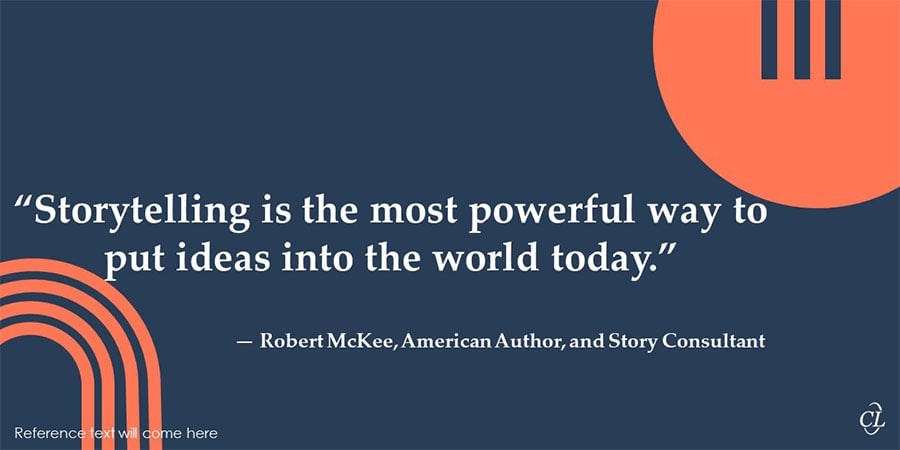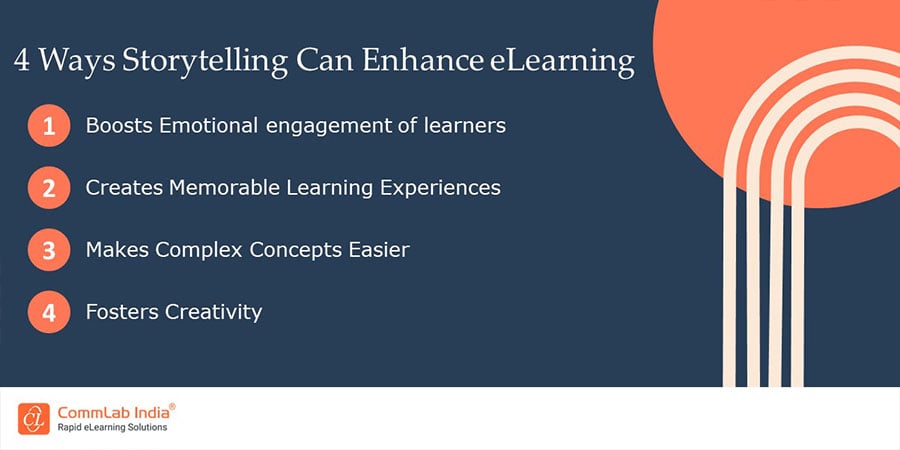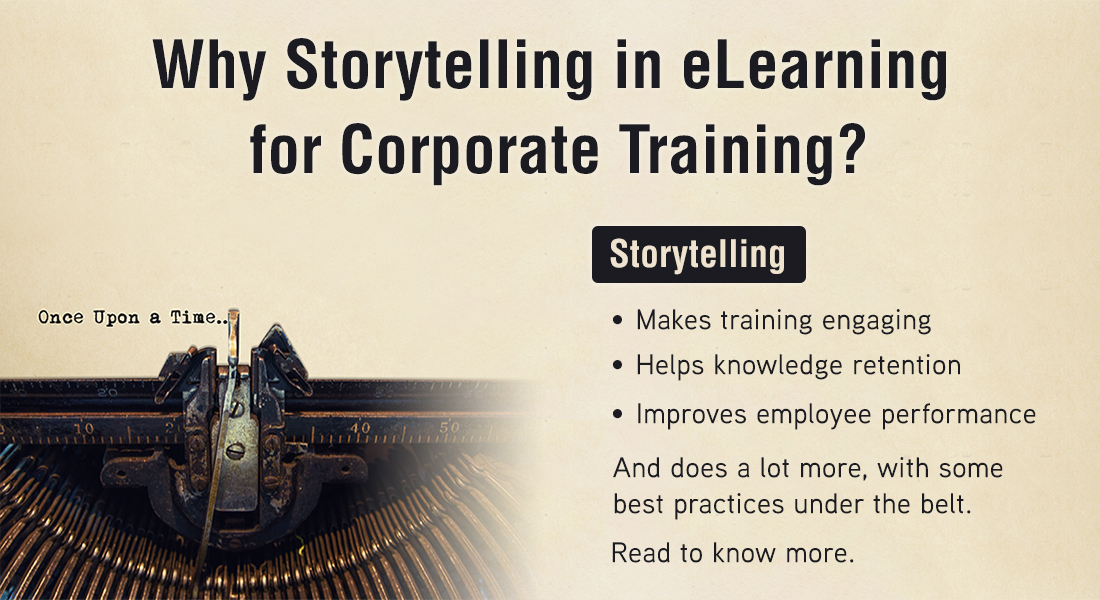How Storytelling Can Breathe Life into Your eLearning Courses

Storytelling has been a part of human culture for many years, and it’s something that many companies use to engage their customers and employees. Storytelling can be used in corporate eLearning courses as well! Before we get started, here’s a quick reminder: storytelling is an immersive eLearning strategy that’s worth considering. You may already be familiar with other types of eLearning—like video-based or text-heavy content—but storytelling is a new form of eLearning, making waves in corporate circles.
Unleash the Power of Storytelling in eLearning!
Explore the key benefits of storytelling in eLearning:
- Makes the courses engaging
- Adds creativity
- Facilitates learning and improves retention
It’s no secret that the best way to add creativity and story to your eLearning courses is through storytelling. But how does this work? Why should you use storytelling in your eLearning projects? What are its advantages over other storytelling methods, like videos or photos?
We’ll explore these questions and give tips on how best to incorporate storytelling into your future eLearning projects. In this article, you’ll learn about the importance of storytelling in eLearning and how it can breathe life into your courses. Stay with us to learn more about the process and its benefits.
The Importance of Storytelling in Corporate eLearning Courses
Storytelling is an effective way to make your eLearning courses more engaging and memorable. It’s also a way to add creativity, which can help you convey a message in a more meaningful way. In fact, storytelling has been shown to improve retention rates by up to 80%. Storytelling can be incorporated into eLearning through stories, scenarios, and case studies. And, with modern authoring tools, it is easy to add the elements of storytelling into eLearning — thanks to the rich media asset library that offers attractive templates.
Watch this video for 3 reasons why you shouldn’t miss using storytelling in eLearning.
When it comes to corporate training programs, storytelling can be particularly helpful because it provides an opportunity to keep employees engaged in the brand story. By providing employees with an engaging narrative about how everything came together over time—and what this means for their future success—you’ll help them understand the impact their decisions will have on the company as well as their own personal growth within it. Here are some reasons why storytelling works so well in corporate eLearning:
Storytelling Makes a Course Engaging
Storytelling is a powerful tool that can help make any eLearning course more engaging and interactive. When learners can connect with the content on an emotional level, they are more likely to be motivated to learn and retain the information.

Storytelling can be an effective way to make a corporate eLearning course more interactive and engaging for learners. By incorporating real-life scenarios, personalizing the content, creating characters, and using multimedia, you can help learners connect with the content and retain the information more effectively.
Storytelling Adds More Creativity to Courses
Storytelling is a powerful tool that can help engage learners, capture their attention, and create a more immersive and memorable learning experience. By using storytelling techniques, eLearning courses can go beyond just presenting information and instead create a narrative that learners can follow and engage with.

Here are some ways storytelling can enhance the quality of your eLearning courses:
- Engage learners emotionally: Storytelling can help create an emotional connection between the learner and the content. By using compelling stories, learners can connect with the information on a deeper level and remember it more effectively.
- Create memorable learning experiences: When learners are engaged and emotionally invested in the content, they are more likely to remember it. Storytelling can help create a memorable learning experience that learners will remember long after the course is over.
- Make complex concepts easier to understand: Storytelling can help simplify complex concepts by presenting them in a way that learners can easily understand. By using real-world examples and relatable characters, learners can better understand how the concepts apply in their own lives.
- Foster creativity: By using storytelling techniques, eLearning courses can encourage learners to think creatively and critically about the content. This can help learners develop problem-solving skills and become more engaged in the learning process.
→ Download eBook: Instructional Design Strategies to Design Engaging eLearning
Storytelling Facilitates Learning and Improves Retention
Storytelling is a great way to add creativity and engagement to your eLearning courses. It can help you create more engaging content, which in turn leads to higher retention rates.
Storytelling inspires learners with the ability to relate their experiences, emotions and actions back into the learning experience. This is because storytelling engages people by bringing them into a world where they feel at home and comfortable enough that they don’t need an explanation (or even have time).
When learning becomes fun, employees want to stay in your organization and benefit from the skill enhancement on offer.
How to Tell a Story in Corporate eLearning
Storytelling can breathe life into your corporate eLearning courses. Here are some tips for using stories effectively:
Stories often have a beginning, middle, and end. Each part of the story builds on previous parts of it (or introduces new content). This makes it easier for learners to remember what they’ve learned about your course’s content in general because they’ll be able to recall specific points from their own personal experience as well as from other relevant sources like news reports.
You can tell a story in many different ways, but the most common way of telling a story is through dialogue. You’re telling your audience what you need them to know about your topic and why it’s important for them to understand it.
A good way to do this is by giving examples and showing how those examples relate back to the topic at hand. If there are any gaps in understanding or knowledge that need filling, then you’ll want those gaps filled as well!
Summing it up!
In conclusion, storytelling is one of the most powerful ways to engage your audience and make them feel like they’re part of the story. It’s also a great way to add creativity to your corporate eLearning courses. It serves to create an immersive learning experience, enhances learner motivation, and encourages an emotional connection to the topic. If you are looking for cues on how to design engaging eLearning courses, refer to this eBook to explore popular instructional design strategies. Grab your copy now!





